Graves of Elite Warrior and Aphrodite Cult Priestess Uncovered in Russia
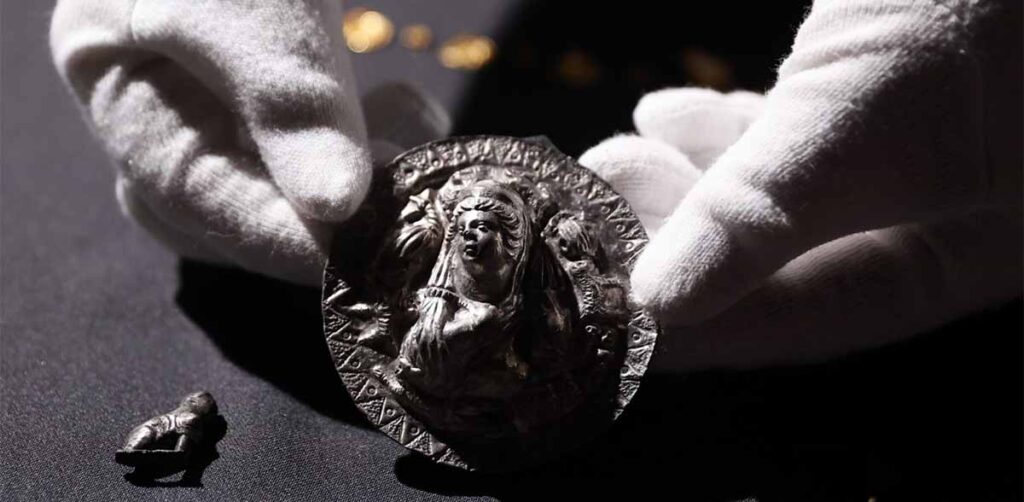
About 1,900 years ago, a woman died and was buried in Phanagoria – a city established centuries earlier on the coast of the Taman Peninsula in southern Russia. Her grave was together with others in the ancient city’s necropolis and while there was nothing particularly unusual about it, she was a priestess of the Aphrodite cult, the archaeologists excavating the ancient city concluded.
Another intriguing find at the Black Sea site was a warrior’s tomb featuring a sword that had been made in early medieval Iran. The woman’s grave was found by archaeologists Nikolay Sudarev and Mikhail Treister, during the 2022 summer season of the Phanagoria archaeological expedition, which has been supported since 2004 by the Oleg Deripaska Volnoe Delo Foundation, says its spokesman Ruben Bunyatyan.
Her adornments included a silver medallion showing the goddess and signs of the zodiac, minus Aquarius and Libra. Such medallions were common in the territory of the Bosporan Kingdom as early as 2,300 years ago, says Maria Chashuk, senior research associate of the Phanagoria archaeological expedition. No, the medallion, a big one – about 7 centimetres (2.75 inches) in diameter and 15 millimetres thick – was not broken, so it is puzzling why Aquarius and Libra are missing, she adds.
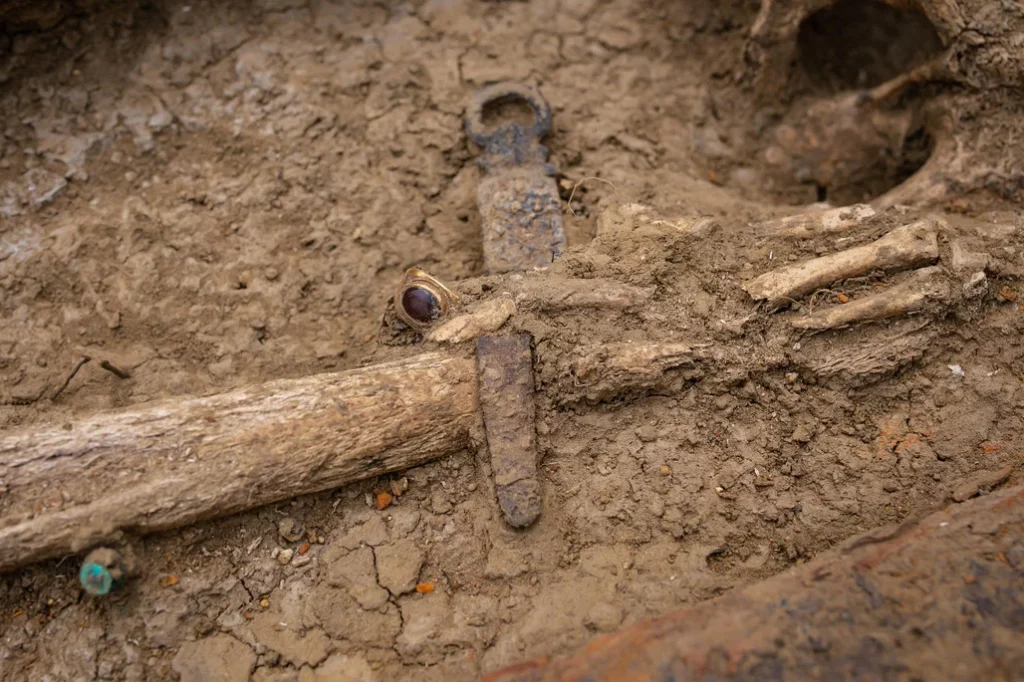
Medallions of the sort were used in many ways: as brooches, as headgear accessories and as pendants, Chashuk explains. “It was found on the lower part of the woman’s chest. On the flip side, there is a brace through which one could put a cord and wear the medallion as a pendant. It looks like that was how the medallion was worn by the woman, but that question is still being studied.”
How did the researchers conclude that the ornament shows none other than Aphrodite? Sudarev and Treister based their decision on iconographic features of the image of the goddess, as well as similar images on other analogous findings in the region, Chashuk and Bunyatyan say.
“The images of the zodiac signs around the goddess also point to the fact that this is indeed Aphrodite Urania, as they emphasize her heavenly hypostasis,” Chashuk adds.
“Aphrodite Urania” refers to the divine aspect of the goddess as opposed to her earthly aspect “Aphrodite Pandemos,” not to mention the legend that she was sired by emissions from the genital package of Uranus that had been hacked off by his son Cronos. Moving on.

The woman also wore silver earrings with pendants in the form of doves and rings that had images so poorly preserved that they can’t quite be made out: possibly images of cornucopia and Eros with wings, Chashuk suggests.
Other grave goods included a red clay jug with a twisted handle, iron scissors with a bronze handle, a bronze mirror, a string of 157 beads (somebody counted) and three bronze coins. The implication – that members of the ancient Greek pantheon were worshipped in first-century Taman – is not surprising. Christianity would only reach the region in the Middle Ages, around the ninth and 10th century, before which the people followed Slavic pagan religions – and before which some evidently adored the Hellenistic pantheon.
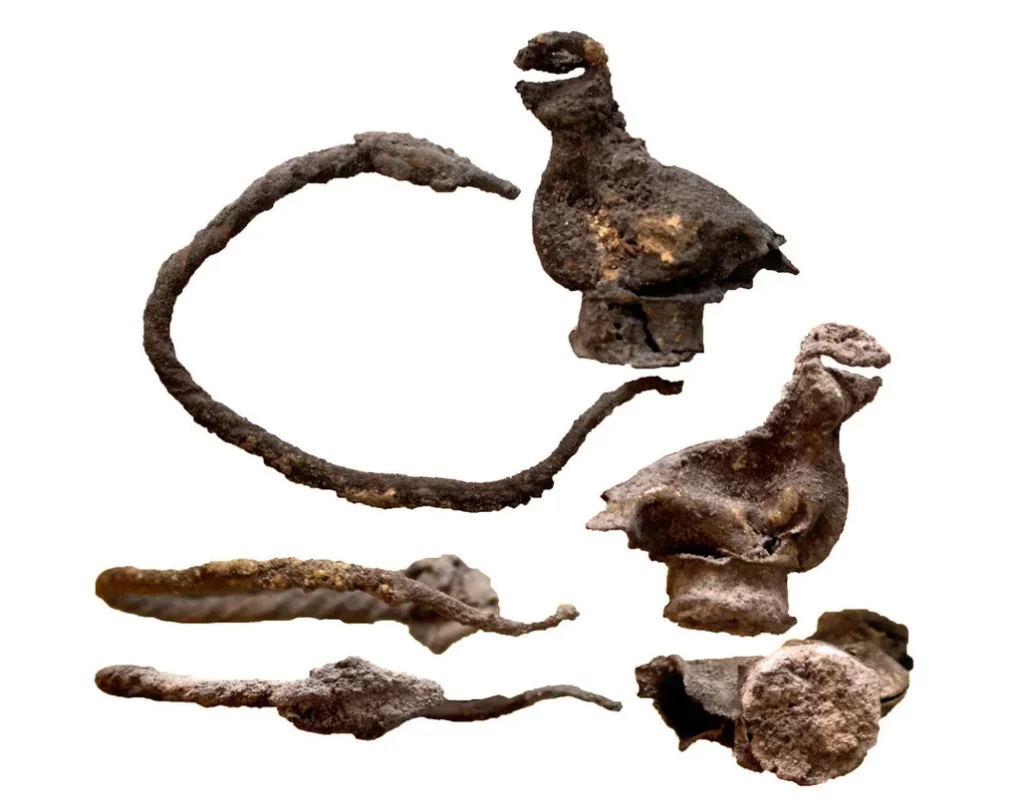
The medallion also suggests belief in astrology, a pseudoscience that posits causative relationships between the positions of celestial bodies and events on Earth. Astrology goes back at least 4,000 years and has been suspected for at least much of that time. Cicero, for instance, wrote roughly 2,050 years ago that divination (by any means) would be awesome if it wasn’t hooey: “A really splendid and helpful thing it is – if only such a faculty exists,” he wrote in “Defense Divinatione.” He added that all men believe “signs are given of future events” – which applies, more or less, to this day.
While Cicero wrote arguments (at remarkable length) for and against astrology’s merits, centuries before him Xenophanes, born in the sixth century B.C.E., reportedly took an actual stand against trying to peer into the future through omens and portents – if only because the gods can’t be bothered to communicate with us, lowly humans.
So, a woman died in first-century Phanagoria and was buried with a medallion showing Aphrodite and 10 signs of the zodiac, and some goods for the afterlife. But maybe she was a groupie of the goddess – why think she was a priestess?
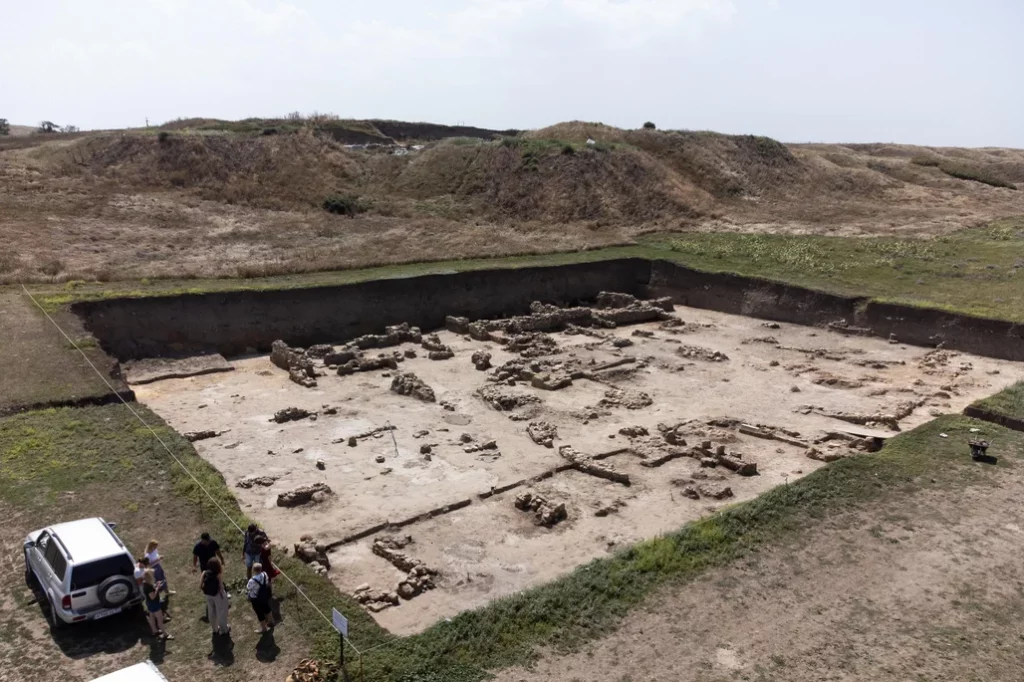
Sudarev, an archaeologist with the Russian Academy of Sciences, believes that some of the items from the burial have specific semantic meanings, Chashuk says. “For example, silver earrings with pendants in the form of doves could be associated with different deities, but most often doves are mentioned as a symbol of Aphrodite Urania. The mirror and scissors often had a ritual meaning (as a tool for trimming hair) and could also be one of the symbols of the goddess.”
The excavators also found two scarab-type beads made of Egyptian faience, found with other beads on her neck, but they bear highlighting because they bore hieroglyphs at the bottom: one showing a sitting cat-raptor and the other a cobra-Uraeus with a solar disk.
“Mr. Sudarev notes that the symbols on the scarabs relate to the Egyptian analogues of Aphrodite Urania – Wadjet [the cobra goddess] and Hathor,” Chashuk sums up.
At the end of the day, the presence of Aphrodite worship and, possibly, the burial of a priestess to her cult support the belief that Phanagoria was founded as a Greek colony on the Taman Peninsula, the archaeologists say.
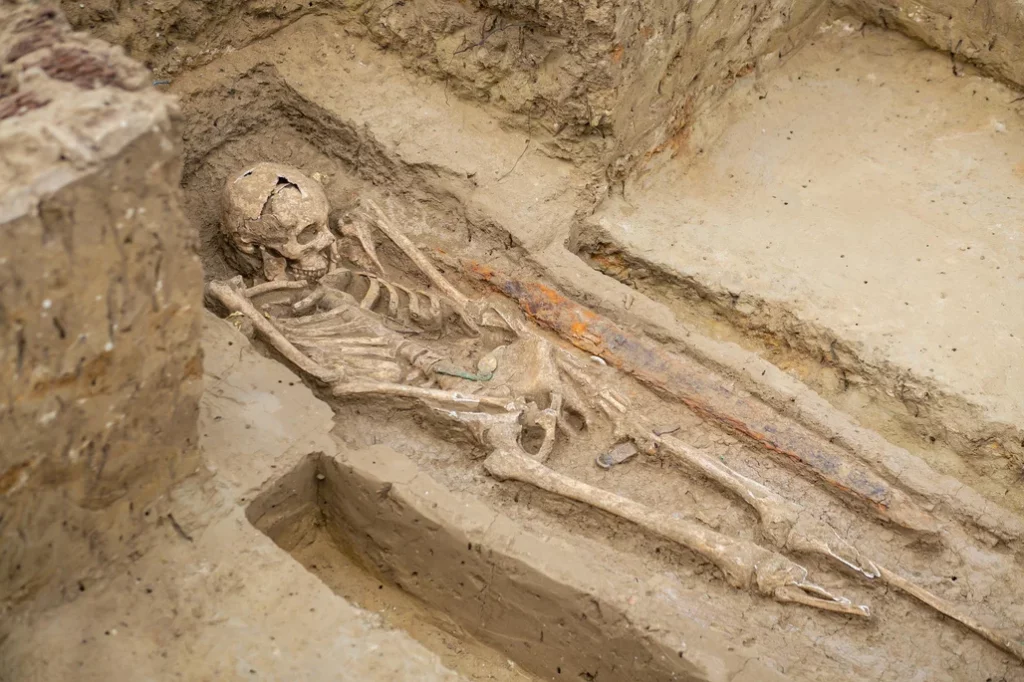
Signs of Sassanians
While the existence of deities and their amiable propensity to share information is dubious, and if anybody had consistently gotten their forecasts right, we would probably have heard about it – there is no similar dubiety about the existence of war. The discovery of the Sassanian sword in a burial in Phanagoria, from about 1,500 years ago, is more information about practical matters. “Archaeologists believe that the weapon is part of the Iranian group of swords due to the distinctive golden top of its wooden hilt,” explains Bunyatyan.
Finding a fine sword of Iranian (Sassanian) origin in the territory of the Kingdom of the Cimmerian Bosporus supports historic sources describing the Sassanid Empire’s political and military influence in the Caucasus region and along the Taman Peninsula, says Alexey Voroshilov, head of the Phanagorian expedition’s necropolis team. It could have been a diplomatic gift.
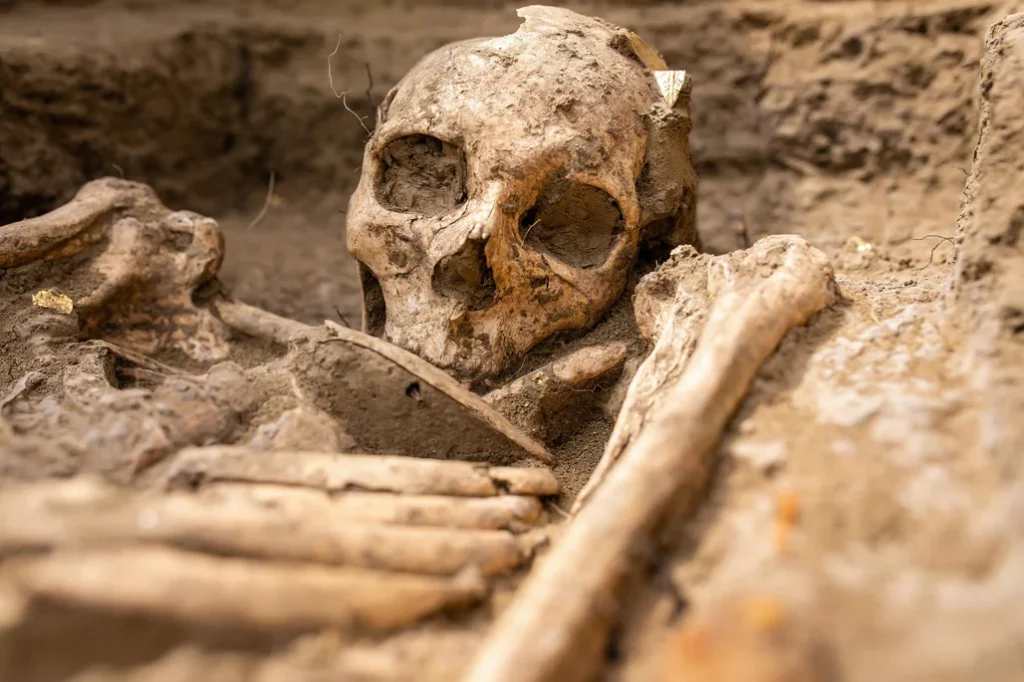
Or, might it reveal the use of mercenaries, foreign soldiers fighting for filthy lucre, which was apparently not unknown in Classic times? It seems that even the “Greek army” that combated the “Carthaginian forces” were stuffed to the gills with hired help.
Not likely, because the sword was just too good, says Voroshilov. “Expensive prestigious weapons were either made to order or came as war trophies. The ceremonial arms and horse harness were part of the diplomatic gifts,” he says. “Hence, it is highly unlikely that the owner of the sword was a mercenary. There is no doubt that this person was a representative of the elite of Phanagoria and was a bearer of the military aristocratic culture of the Bosporan Kingdom in the Migration Period.”
It’s the only sword of its kind to be found in Phanagoria, he says, adding that “this is the first major discovery in Phanagoria testifying to cultural ties between the elites of Phanagoria and the Sassanid Empire.”
The warrior was also buried with other fine stuffs. “In the tomb itself, a lot of rare things were discovered, including imported items: glass jugs, wooden and metal utensils, and wooden boxes with decayed cloths. The tomb is notable for its monumentality and considerable depth (about 7 meters), as well as for its opulent burial rites. There is a lot to suggest that noble and wealthy city dwellers were buried in the crypt along with the warrior,” Voroshilov sums up. The priestess seems to have gotten relatively short shrift a few centuries earlier.
